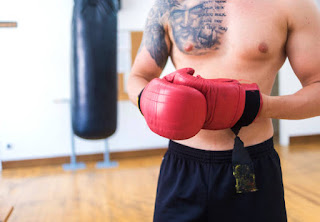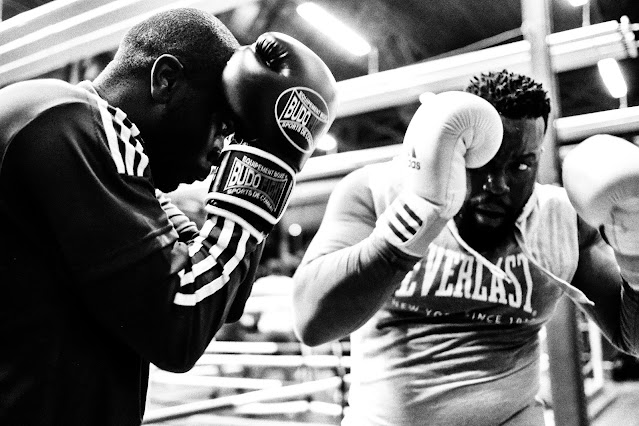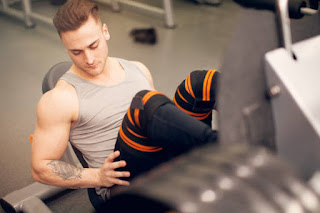What equipment is needed for boxing?
Boxing is a physically demanding sport that requires proper equipment to ensure safety, enhance performance, and maximize training efficiency. Whether you're a beginner training at home or a professional preparing for a fight, having the right boxing equipment is crucial. In this blog, we will provide an informative guide on the equipment needed for boxing, including recommendations for home training, essential gear for beginners, professional-level equipment, and various training aids. Let's dive into the world of boxing equipment.
Boxing Gloves:
Boxing gloves are the most essential piece of equipment for any boxer. They protect your hands and knuckles during training and sparring sessions. When choosing boxing gloves, consider factors such as weight, size, padding, and wrist support. Beginners usually opt for 12 to 16-ounce gloves, while professionals may prefer lighter gloves for faster punches.
Hand Wraps:
Hand wraps provide support and protection to your wrists and hands. They help stabilize the wrist joints, reduce the risk of injuries, and enhance punching technique. Wrapping your hands before putting on gloves is a crucial step to prevent sprains and fractures. Look for hand wraps made of breathable fabric that offer a secure fit.
Punching Bag:
A punching bag is an essential training tool for boxers of all levels. It allows you to practice punches, combinations, footwork, and overall conditioning. There are various types of punching bags, such as heavy bags, speed bags, and double-end bags. Choose a bag that suits your training goals and available space. Heavy bags are ideal for developing power and strength, while speed bags improve hand-eye coordination and speed.
Speed Rope:
A speed rope, also known as a jump rope, is a simple yet effective training tool for boxers. It helps improve footwork, coordination, endurance, and cardiovascular fitness. Look for a lightweight, adjustable speed rope with comfortable handles for efficient training sessions.
Boxing Shoes:
Boxing shoes are designed to provide optimal footwork, grip, and ankle support. They have thin soles that allow boxers to feel the ground, pivot smoothly, and maintain balance. Invest in a pair of lightweight, high-quality boxing shoes that fit snugly and offer good traction.
Mouthguard:
Protecting your teeth and jaw is crucial in boxing. A mouthguard provides cushioning and prevents dental injuries. It also helps reduce the risk of concussions by absorbing impact. Custom-fit mouthguards offer the best protection, but boil-and-bite options are available for a more affordable alternative.
Headgear:
Headgear is primarily used for sparring and offers protection for the head, face, and ears. It helps reduce the risk of cuts, bruises, and concussions. When choosing headgear, look for a comfortable and secure fit that doesn't obstruct your vision or hinder your movements.
Boxing Training Gloves:
Apart from regular boxing gloves, training gloves can be useful for specific purposes. Training gloves are typically heavier, ranging from 16 to 20 ounces, and provide additional resistance during workouts. They help build endurance, strength, and punching power. However, they should not be used for sparring.
Medicine Ball:
A medicine ball is a versatile piece of equipment for boxing training. It can be used for core exercises, rotational movements, and strength conditioning. Medicine balls come in various weights, so choose one that challenges you without compromising form and technique.
Boxing Timer:
A boxing timer is a valuable tool to structure your training sessions and ensure efficient time management. It allows you to set round durations and rest intervals, simulating the conditions of a boxing match. There are dedicated boxing timers available, or you can use smartphone apps or online timers.
Best Equipment for Boxing at Home:
Boxing Gloves: Choose a pair of well-fitted boxing gloves suitable for your training needs. Opt for a weight between 12 to 16 ounces for general training.
Hand Wraps: Protect your hands and wrists with hand wraps. They provide support and prevent injuries.
Punching Bag: Invest in a heavy bag or a freestanding punching bag to practice your punches, combinations, and improve overall conditioning.
Speed Rope: A speed rope helps improve footwork, coordination, and cardiovascular fitness.
Jump Rope Mat: Use a jump rope mat or any suitable surface to protect your joints and absorb impact while skipping.
Double-End Bag: Improve accuracy, timing, and reflexes with a double-end bag. It requires less space and offers a challenging training experience.
Medicine Ball: Incorporate a medicine ball into your workouts for strength and conditioning exercises, such as rotational movements and core training.
Floor-to-Ceiling Ball: A floor-to-ceiling ball is a great addition to home boxing setups as it helps improve hand-eye coordination, accuracy, and timing.
Boxing Timer: Use a boxing timer or smartphone app to structure your training sessions with round durations and rest intervals.
Boxing Equipment for Beginners:
Beginner Boxing Gloves: Start with a pair of 12 to 14-ounce gloves suitable for training and sparring.
Hand Wraps: Essential for protecting your hands and wrists, hand wraps provide support during training sessions.
Punching Bag: Invest in a heavy bag or a freestanding punching bag to practice basic punches and combinations.
Jump Rope: A speed rope helps develop footwork, coordination, and cardiovascular fitness.
Mouthguard: Protect your teeth and jaw with a mouthguard during sparring or intense training sessions.
Professional Boxing Equipment:
Professional Boxing Gloves: Choose gloves that meet professional boxing regulations, with weights varying between 8 to 10 ounces for competitions.
Training Gloves: Use heavier training gloves, typically 16 to 20 ounces, for conditioning and building strength.
Sparring Headgear: Invest in high-quality headgear to protect your head, face, and ears during sparring sessions.
Groin Protector: Essential for male boxers, a groin protector provides added protection during sparring and competitive matches.
Boxing Shoes: Opt for lightweight, high-quality boxing shoes that offer ankle support, grip, and maneuverability.
Competition-Grade Mouthguard: Custom-fit mouthguards offer the best protection and comfort during professional fights.
Hand Wraps: Professional boxers continue to use hand wraps for added support and protection.
Boxing Timer: A reliable boxing timer helps structure training sessions and simulate competition conditions.
Conclusion
Boxing requires proper equipment to ensure safety, enhance performance, and maximize training effectiveness. Whether you're training at home or pursuing a professional boxing career, investing in the right equipment is essential. From boxing gloves and hand wraps to punching bags and training aids, each piece of equipment serves a specific purpose in improving your skills, strength, and overall conditioning. Remember to prioritize safety, comfort, and quality when selecting your boxing gear. Equip yourself properly, train diligently, and enjoy the exhilarating journey of boxing.

.jpg)


Comments
Post a Comment